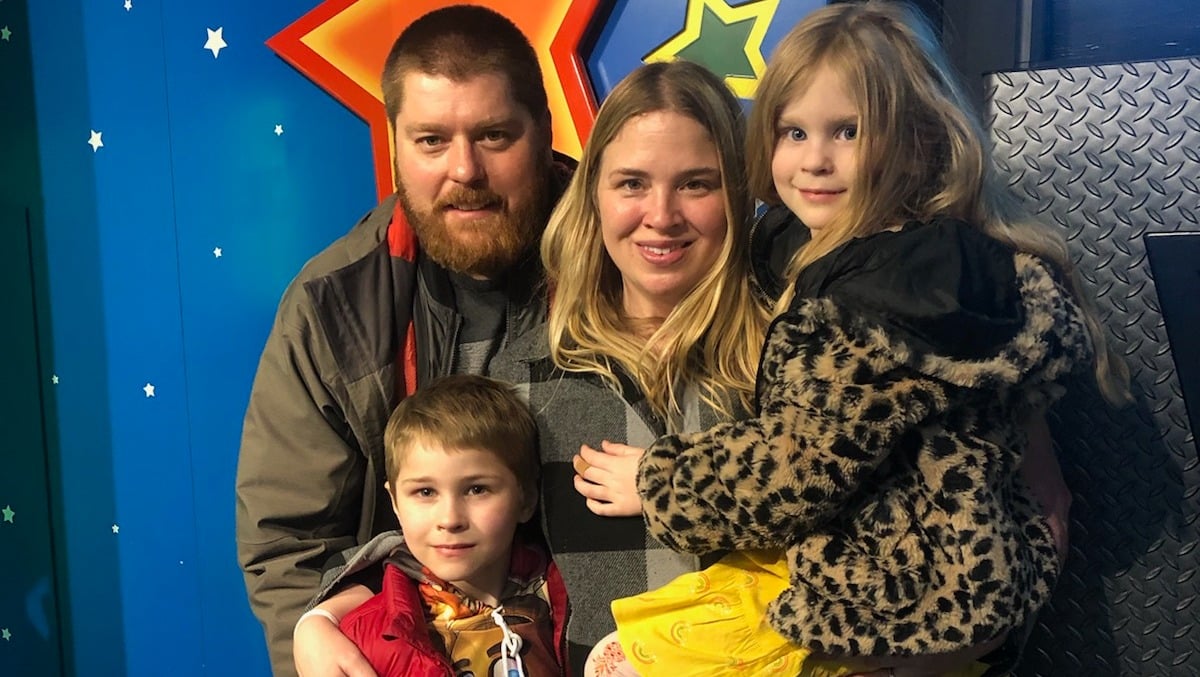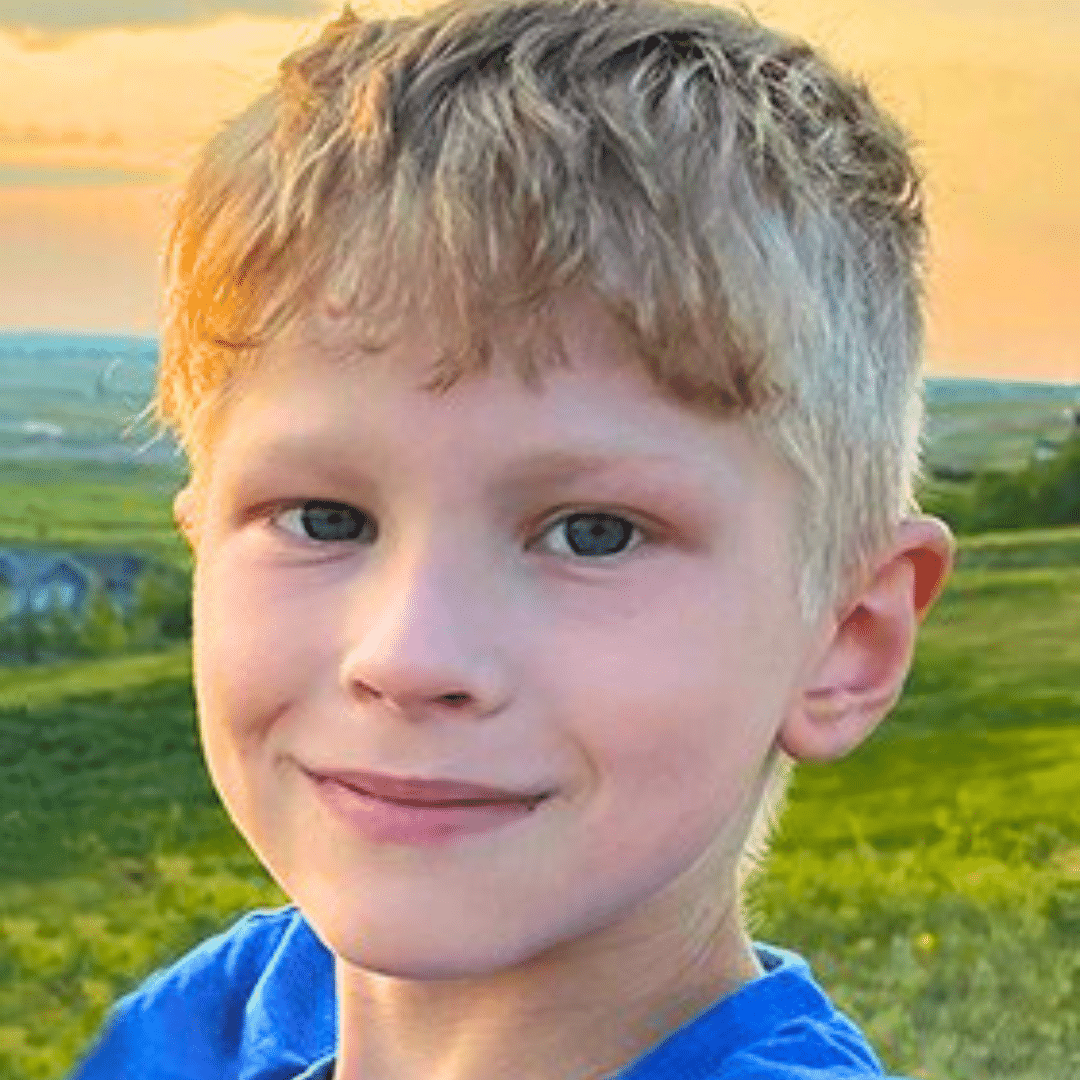2025 James Lemonade Stand

Date: Sunday, August 31, 2025
Location: Evanston Community Park
Address: 115 Evanston Drive, Calgary, AB
Join us for the 2nd Annual James’ Lemonade Stand!
Grab a glass of lemonade and join the Lipowy family and friends in honoring James and his courageous battle against osteosarcoma. Come together for an inspiring day filled with community, a silent auction, and plenty of fun — all while raising awareness and supporting vital research for osteosarcoma.
100% of donations made in James’s memory support osteosarcoma research and clinical trials.
James’ Story
James Lipowy (March 6, 2015 – August 17, 2023) of Calgary, Alberta (also known as Boo to his family), was an exceptional, intelligent, brave, and funny boy. James loved reading, playing sports, telling jokes, and spending time with his friends and family, including his loving parent, Jacquie and Ryan, and his little sister Lainie.
Once James became passionate about something, his life revolved around it. As a toddler, he held on to a character from the movie Sing that he called “Guy” and a little yellow school bus; neither one left his sight. Over the years his passions included Paw Patrol, Transformers, Marvel and DC superheroes, Sonic the Hedgehog, Five Nights at Freddy’s, and most recently soccer. James’s favourite team was Manchester United, and his favourite player was Ronaldo or Messi, depending on the day.
James’ beautiful smile would light up a whole room.
James was five when he was diagnosed with osteosarcoma in January 2021. He underwent chemotherapy treatment and surgeries for the disease. He formed close bonds with his oncology doctors, nurses, and support team.
Unfortunately, in the summer of 2022 James required further surgery. He recovered quickly, and was back to having fun at playgrounds and going to birthday parties. Worse news followed in October, when James’s cancer had spread further, and surgery was not an option. Family and friends banded together to raise funds, research new cancer treatments and search far and wide for the best options. James created a YouTube channel raising awareness, while giving hope to others with osteosarcoma by showing all of the things he was capable of doing.
On August 17, 2023, with his parents by his side, James passed away peacefully after a long battle with osteosarcoma.

Thank You from the Lipowy Family!
To honor James’ legacy and help fulfill his wishes, our family is partnering with the Osteosarcoma Institute (OSI) and to establish a family fund to help advance osteosarcoma research. When you donate to the OSI in James’ memory, 100% of your gift to the OSI will support research and clinical trials to find new treatment options for osteosarcoma.
Donate Today in Loving Memory of James Lipowy

Osteosarcoma Statistics

Osteosarcoma is the most common childhood bone cancer.

No new treatments have been approved for osteosarcoma patients in 40 years.

1 in 3 children with osteosarcoma will not survive.
Frequently Asked Questions
-
What is osteosarcoma?
Osteosarcoma is a type of bone cancer that originates in cells of the bone. The word “osteosarcoma” comes from the Greek words sarc, meaning fleshy substance, and oma, meaning growth. Osteo adds bone-like to the word sarcoma. It can occur anywhere along the skeleton, but the most common sites are in longer bones, for instance around the knee (distal femur and proximal tibia) and shoulder (proximal humerus).
-
How common is osteosarcoma?
Osteosarcoma is rare — only around 1,000 people are diagnosed in the United States each year. Osteosarcoma most commonly occurs in children, teenagers and young adults between the ages of 10 and 30. It is slightly more common in boys and young men. There is a peak incidence of osteosarcoma during the adolescent growth spurt. It is very rare in children under 5 years old.
-
What causes osteosarcoma?
The exact cause is still unknown. Osteosarcoma develops when healthy cells responsible for making new bone experience changes in their DNA. These DNA changes tell the cells to make abnormal bone. This results in a tumor that invades and destroys surrounding healthy bone and surrounding tissue.
-
Can osteosarcoma be prevented?
It cannot be prevented. However, there are certain risk factors to be aware of. Osteosarcoma risk factors include:
● Bone disorders (Paget’s disease and fibrous dysplasia)
● Exposure to radiation (for example, previous cancer treatment)
● Rare, inherited disorders (hereditary retinoblastoma, Bloom syndrome, Li-Fraumeni syndrome, Rothmund-Thomson syndrome and Werner syndrome) -
What are the symptoms?
People with osteosarcoma may have a variety of symptoms, including:
● Pain in and around a bone that becomes persistent and severe over time
● Swelling near a bone
● Limping and/or inability to lift or use a limb
● Bone injury/fracture from minor trauma
If you or your child is experiencing any of the above symptoms, contact your doctor. -
How is osteosarcoma diagnosed?
The diagnosis of osteosarcoma can only be definitively made with a biopsy of the affected area. Thanks to advanced imaging technology, doctors can see — with precision — where the abnormality is located in the body and help guide the biopsy. Once a biopsy confirms the diagnosis of osteosarcoma, a variety of other tests may be ordered to further determine the extent of the tumor. These may include:
● X-Ray
● Computed tomography (CT) scan
● Magnetic resonance imaging (MRI)
● Positron emission tomography (PET) scan
● Additional blood tests
-
Can osteosarcoma spread?
Yes, osteosarcoma can metastasize, or spread, to other areas of the body, most commonly to the lungs. Osteosarcoma that spreads to the lungs happens when tumor cells travel to the lungs through the bloodstream. But since our blood always travels to the lungs to provide oxygen to our blood (and not all cancers spread to the lungs first), there must be additional reasons that osteosarcoma is so prone to lung metastases. This is an area of active research.
-
What are the treatment options for osteosarcoma?
Current therapy for osteosarcoma almost always includes the combination of a standard chemotherapy treatment and surgery. Most commonly, chemotherapy is given for several months before surgery and is continued after the patient has recovered from their surgery. The type of surgery performed can vary, but usually includes limb-preservation surgery. Following recovery from surgery, patients begin physical rehabilitation as part of their recovery process.
-
What should I know about clinical trials?
Clinical trials are available, if and when a patient recurs, following standard treatment. These trials provide patients access to novel treatment methods and drug therapies that are being developed to treat osteosarcoma. Depending on your individual case, you may be eligible to participate in one. The Osteosarcoma Institute is pleased to connect you with a free and confidential clinical trial matching service. Most clinical trials for osteosarcoma include newer “targeted therapy drug” or combinations with immunotherapy.
-
What are treatment side effects?
With any cancer treatment, there are side effects. This is also true for osteosarcoma treatment. Surgery often involves use of an internal prosthesis and rarely an external prosthesis. Physical therapy will be provided as you heal to help guide rehabilitation and ensure strength and movement are regained in the safest way possible. Chemotherapy side effects can include hair loss, nausea, fatigue, weakness, loss of appetite and weight loss. These side effects will resolve when chemotherapy is completed.
-
What is the outlook for people with osteosarcoma?
The outlook depends on many factors, including the location and size of the tumor, whether the cancer has spread and the person’s age and overall health. For more information on osteosarcoma survival rates, click here.
-
Why is more research needed?
There have been no improvements in survival of osteosarcoma patients for more than 30 years. Osteosarcoma is complex, and more research is needed. For a brief history of osteosarcoma treatment, click here. Areas of research include gene therapy, targeted drug therapy and immunotherapy.
